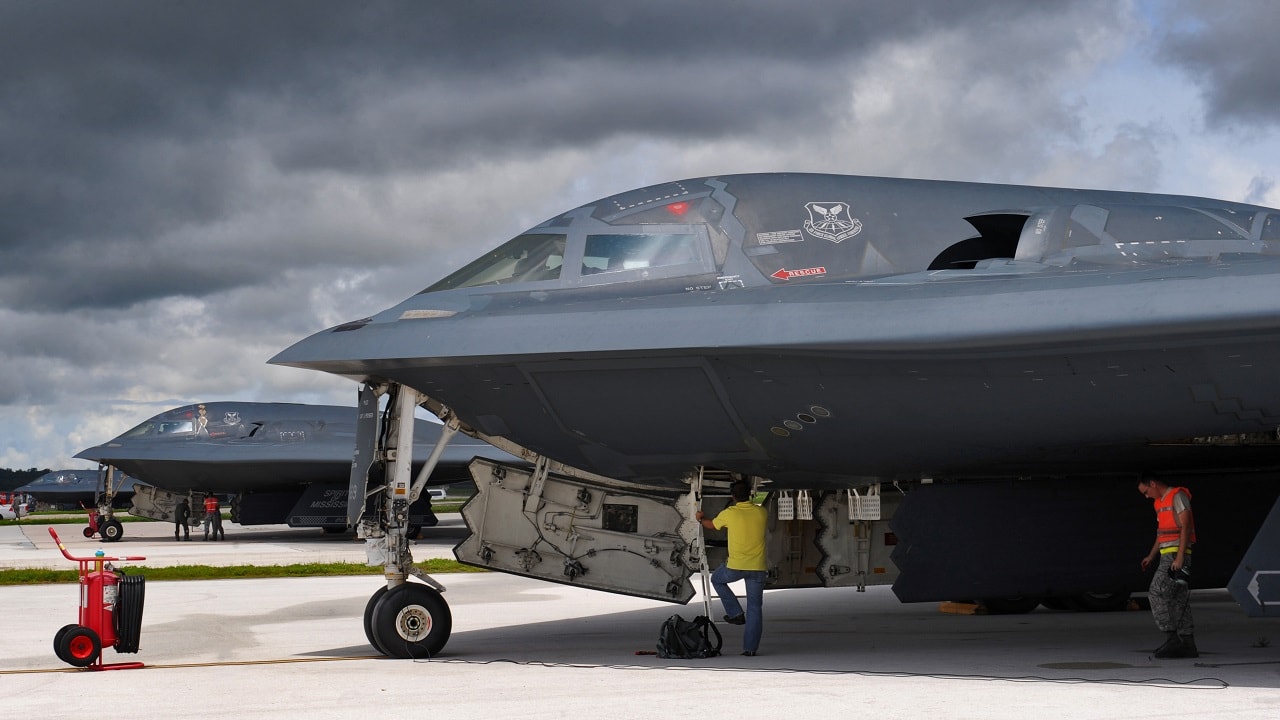Summary and Key Points: The U.S. Air Force has deployed B-2 Spirit stealth bombers to Diego Garcia in the Indian Ocean amid escalating tensions with Houthi terrorists in Yemen.
-Supported by two aircraft carrier strike groups in the Middle East, the bombers significantly enhance America’s offensive capabilities, potentially signaling an impending large-scale operation.
-Recent deployments of cargo and refueling aircraft suggest sustained bombing missions could be imminent.
-While past airstrikes have targeted Houthi missile launchers and storage sites, the arrival of B-2s may indicate plans for deeper, more impactful strikes—sending a robust message to Iran and potentially reshaping strategic dynamics across the region.
U.S. Air Force Sends B-2 Stealth Bombers to Strategic Island in the Indian Ocean
The Middle East continues to heat up. Two U.S. Navy aircraft carrier strike groups have entered the area of responsibility to overawe the Houthi terrorists. A new round of air strikes could be imminent with Navy fighter jets and even U.S. Air Force bombers. In fact, a group of B-2 Spirit stealth bombers have been sent to the Indian Ocean outpost Diego Garcia that could signal a new more powerful round of attacks against the Houthis.
B-2s Are Coming to Bring a Powerful Bombing Option
This island has been a staging ground for U.S. strikes several times in the past. Currently, at least three B-2s have been picked up on social media listening channels that monitor communications with air traffic controllers. The Spirits flew over Australia, re-fueled in-air, and headed to Diego Garcia.
In another sign that some type of larger combat operation is imminent, three C-17 cargo planes and then KC-135 re-fueling tankers landed at the British territory over the last two days. Additional B-2s likely left Whiteman Air Force Base in Missouri for Diego Garcia as well. All 20 B-2 bombers are stationed at Whiteman.
The Air Force Is Not Saying Much About the Deployment
The U.S. Strategic Command is keeping the deployment under wraps and have only made vague statements about the B-2 activity.
“U.S. Strategic Command, its components, and subordinate units routinely conduct global operations in coordination with other combatant commands, services, and participating U.S. government agencies to deter, detect and, if necessary, defeat strategic attacks against the United States and its allies,” Air Force Global Strike Command told the War Zone. “To preserve operational security, we do not discuss details about exercises or operations.”
B-2 Arrivals Are Not a Common Occurrence
The B-2s haven’t been on Diego Garcia since 2020. There is a chance that this could be a regular rotation planned months ago and not a specifically ordered operation to attack the Houthis or bomb military and nuclear sites in Iran. But the timing appears that the bombers are there for a clear-cut combat reason that is beyond run-of-the-mill mission parameters and deployments.
B-2s bombed underground weapons storage sites in Yemen last October but they did not use Diego Garcia for that mission. This latest operation could mean that the bombers will be there for an extended period since aerial re-fueling tankers and C-17s landed there to prep for more missions.
This deployment will send a message to Iran that the United States is making a stronger show of force in the region.
Ragtag Bunch of Houthis Are Tying Up Two Carrier Strike Groups
The Houthis have been terrorizing civilian shipping in the Red Sea, the Gulf of Aden, and the Bab El-Mandeb Strait for more than 12 months with hundreds of attacks.
They have fired missiles at Israel and at the USS Harry S. Truman carrier strike group. A second strike group led by the carrier USS Carl Vinson was sent to the Red Sea recently.
The B-2s give the U.S. forces more powerful capabilities with heavier precision-guided bombs and missiles plus bunker-busting munitions. This would signal that the United States is willing to up the stakes in Yemen and against Iran if needed. It is not clear if the Air Force will work with the Navy to conduct bigger strikes than the usual “bloody nose” attacks.
President Donald Trump and Secretary of Defense Pete Hegseth may have something more robust in mind. They could decide to target facilities that house the terrorists instead of just going after air defense sites, missile launchers, and munitions storage points.
What Is the Strategy Behind These Bombing Missions?
While the B-2 deployment is a good example of evolving tactics and operational art, it does not show that the United States has an overall end game strategy for Yemen and the Houthis. The terrorists are determined to still attack U.S. warships with missiles and drones and one or more of these could make it through the protective air defense screen and hit a carrier.
This would be disastrous for the Americans and would necessitate a drastic response.
The Houthis will be difficult to eliminate entirely. They don’t seem to be afraid of aircraft carriers. They will learn about the B-2s going to Diego Garcia from the media, but this is not likely to stop the terror attacks. The only way to remove the Houthi threat completely would be to send in the U.S. Marine Corps, but there is no way this presidential administration will agree to boots on the ground. That means a bigger bombing campaign but no guarantee that the Houthis will stop their activity, despite the B-2s in the theater.
B-2 Bomber: A Photo Essay
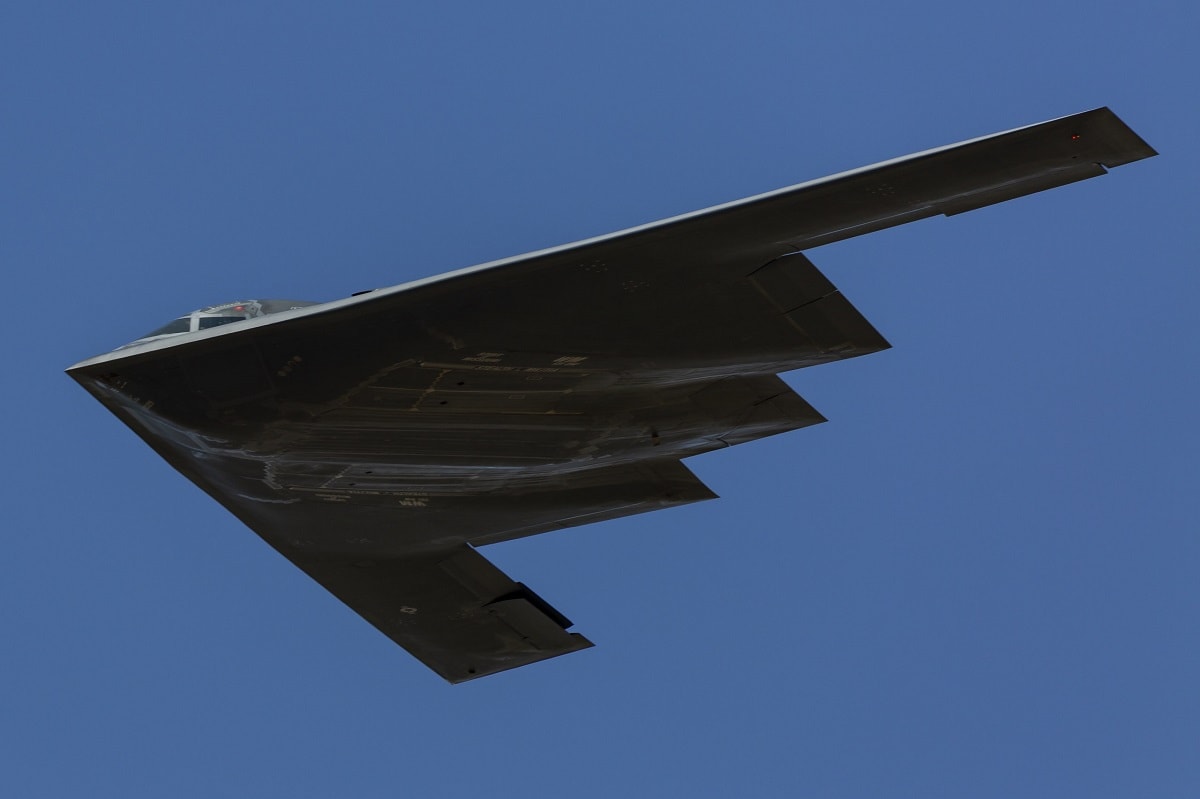
A B-2 Spirit (Spirit of Missouri) at the Dyess AFB air show 2018.
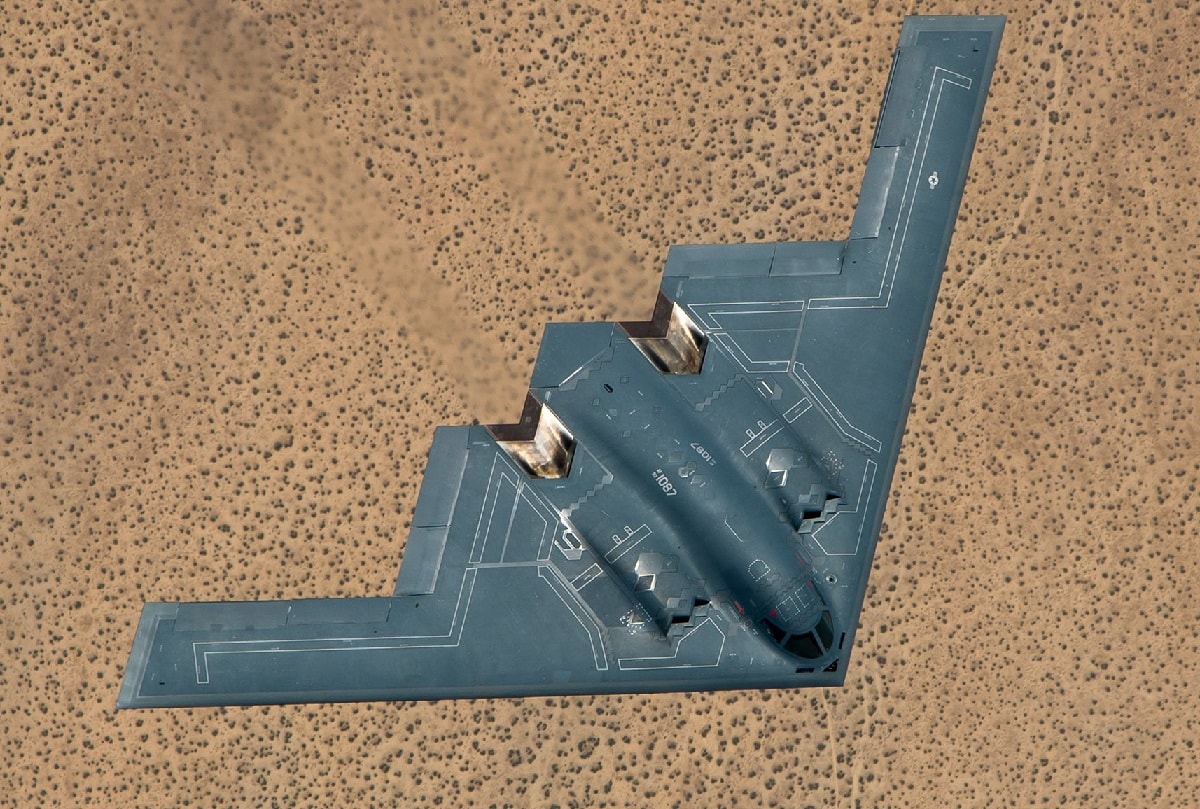
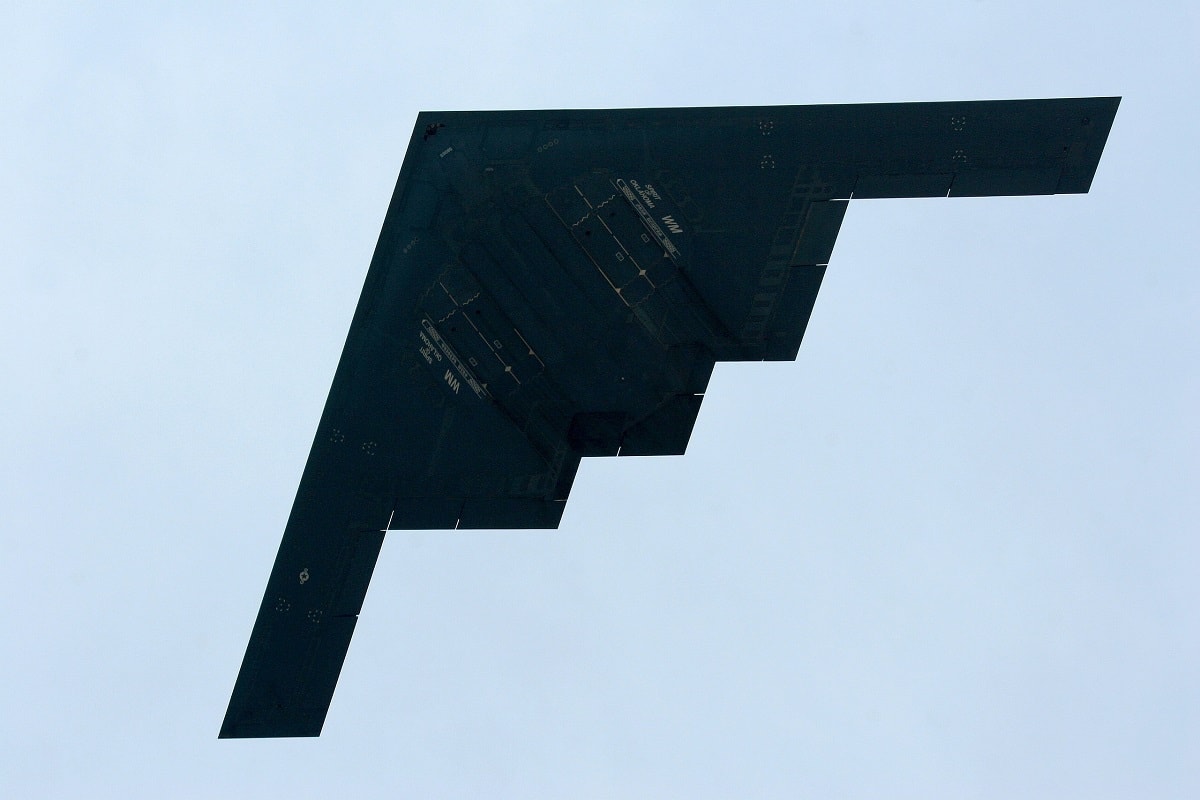
The B-2 Spirit, Spirit of Oklahoma, is silhouetted against the sky during the Thunder Over The Boardwalk Air Show, Atlantic City, N.J., Aug. 23, 2006. (U.S. Air National Guard photo by Tech. Sgt. Mark C. Olsen/Released) (This image was cropped to focus on the subject of the image)
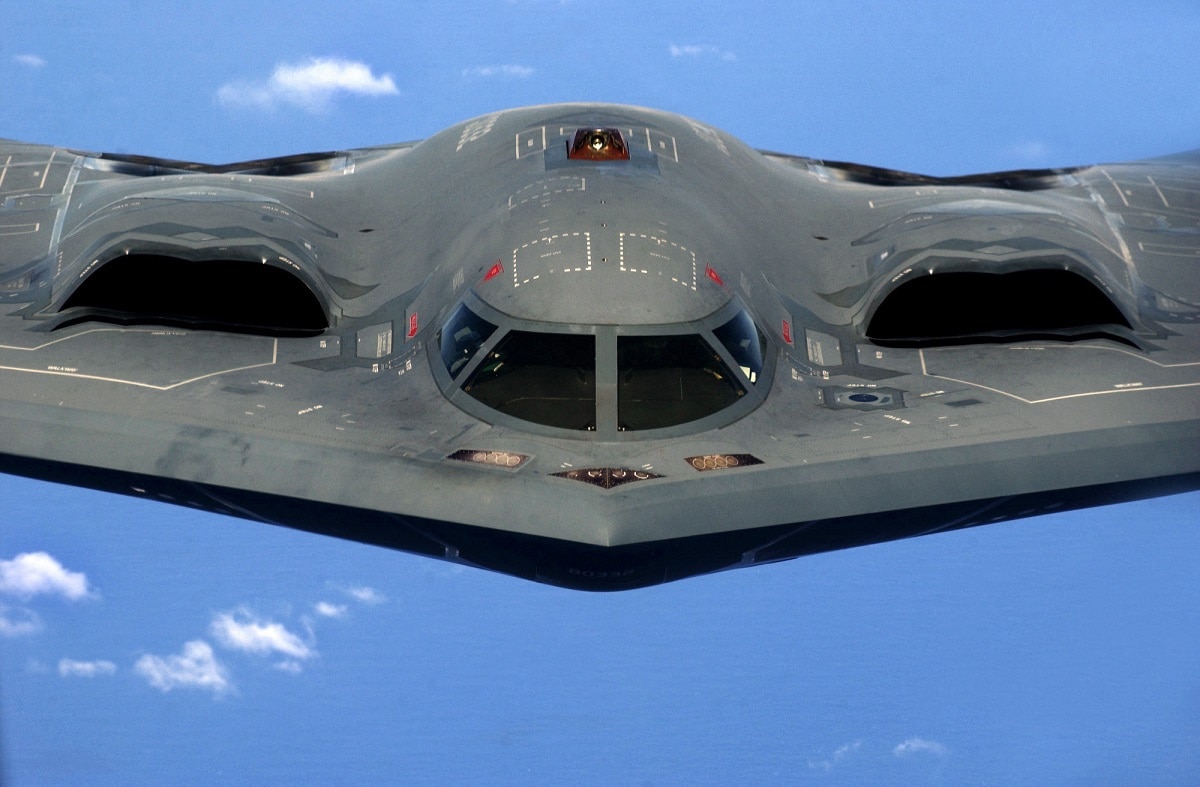
A U.S. Air Force B-2 Spirit “Stealth” bomber, 393rd Expeditionary Bomb Squadron, 509th Bomb Wing, Whiteman Air Force Base, Mo., flies over the Pacific Ocean after a recent aerial refueling mission, May 2, 2005. The Bombers are deployed to Anderson Air Force Base, Guam, as part of a rotation that has provided the U.S. Pacific Command a continous bomber presence in the Asian Pacific region since February 2004, enhancing regional security and the U.S. commitment to the Western Pacific. (U.S. Air Force photo by Tech Sgt. Cecilio Ricardo) (Released)
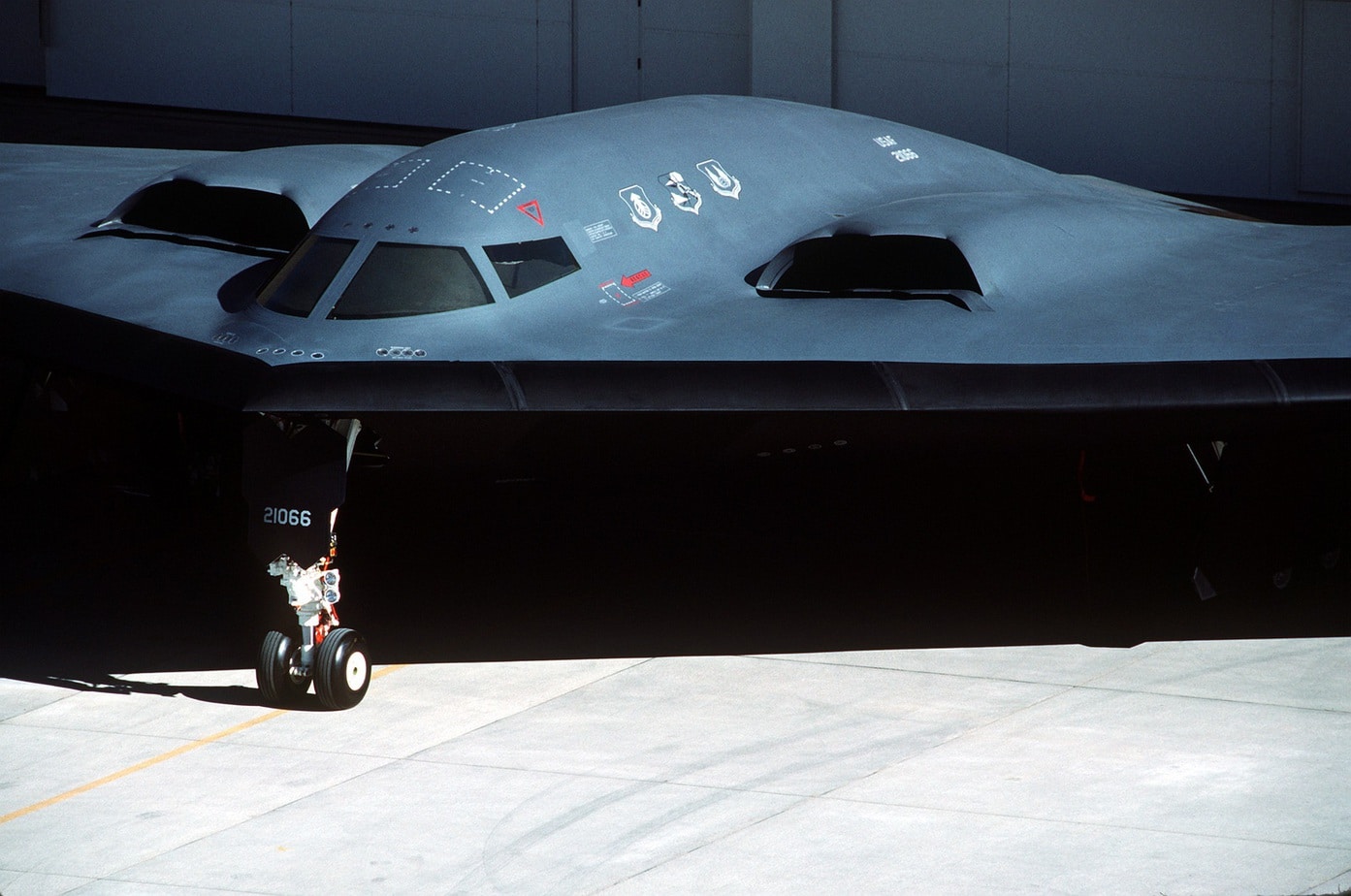
A front view of the B-2 advanced technology bomber at its rollout at Air Force Plant 42.
About the Author: Dr. Brent M. Eastwood
Brent M. Eastwood, PhD is the author of Don’t Turn Your Back On the World: a Conservative Foreign Policy and Humans, Machines, and Data: Future Trends in Warfare plus two other books. Brent was the founder and CEO of a tech firm that predicted world events using artificial intelligence. He served as a legislative fellow for U.S. Senator Tim Scott and advised the senator on defense and foreign policy issues. He has taught at American University, George Washington University, and George Mason University. Brent is a former U.S. Army Infantry officer. He can be followed on X @BMEastwood.

